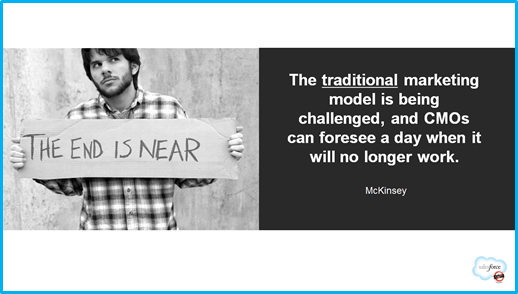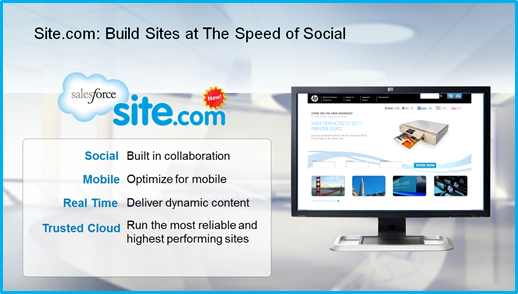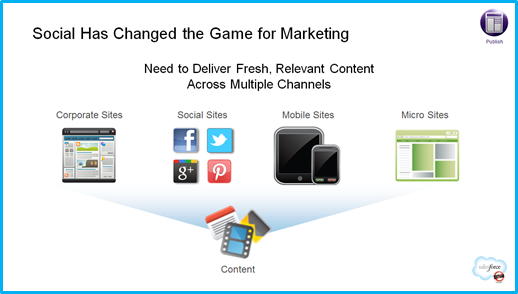
Get your FREE 30-day trial.
Please complete all fields.
Today, I am excited that we are launching Site.com – the only cloud-based web content management system (CMS) built ground up for the social enterprise. This has been a journey over the last few years for me to discover the challenges faced by marketers and their friends in IT who want nothing more than simple, easy to use tools to build, publish and manage their web presence.
We found that the tools available today were built in a slow changing world where you had only a website designed for access from desktop computers – before we had YouTube, Facebook, Twitter, iPads or iPhones. We found marketers struggling and frustrated with websites that take too long to change because of long IT backlogs and outdated systems, having to tackle increasingly complex technologies to do seemingly simple tasks like have consistent brand look and feel that can be applied across multiple pages without requiring coding.
There are simple, easy to use tools out there but they are primarily focused on very small websites and are not built to scale for enterprises. You are forced to choose between ease of use and enterprise features; between drag-and-drop simplicity and pixel-perfect control over look and feel; between low total cost of ownership and ability to scale. This is not working for the marketers. And, we reject this as a false choice.

Source of Quote: McKinsey
We set out to build a cloud CMS that rejected the status quo and the false choice of on-premise legacy systems. Site.com is a service that can meet the needs of marketers without undue burden on IT:

A simple, elegant cloud CMS that allows you to focus on what's most important – delighting your customers as they interact with your brand.
Now, let me take you through the impact of social and mobile, the evolving CMO landscape, the changing role of CIO and how that translated into Site.com Cloud CMS.
Mobile changed everything. Social changed it again.
The Chief Marketing Officer (CMO) role is evolving in most companies – transformed by external factors like the explosion of social media from Facebook & Twitter to Youtube, and the move to mobile. This is a transformation as massive as the shift from print to radio to television. In the late 1990s companies scrambled to have an "e-business" strategy that usually comprised of building an internet website presence. In the last 10+ years, almost everything about so-called 'websites' has changed:
These trends are fundamentally altering the expectations from not only for marketing leaders – from CMO to brand managers, product marketing managers and web marketing professionals but also for IT leaders – from CIO to website developers.

As marketing becomes more digital, social and mobile – they need more capabilities delivered more rapidly and often IT has a hard time keeping up with this pace of innovation. A recent Gartner study points out that by 2017, CMOs may have a larger technology spend than CIOs. In many cases, the CIOs are leading the charge by leading this new transformation while others are trying to keep pace – or as the report points out, in some cases marketing has decided to chart it's on technology course.
We believe there is a better way and that convergence of cloud, social and mobile can not only enable CIOs to deliver the marketing technologies that CMOs need; we believe these transformations can only bear long-term fruit and deliver on the full promise of a 'digital marketing platform' when marketing and IT are a true partners.
We believe that this post-PC internet requires not just some additional features but a fundamental shift in both how you engage with customers and a modern architecture. The Web Content Management Systems (CMS) built for late 1990s are still powering most of the world's websites – in the meantime, Steve Jobs created iPads and iPhones, the web is no longer just HTML and images but rich and interactive, consumers expect to be able to share content via social media and find out who else is saying what in real time, and to be able to find out about your products, services, promotions and events on Facebook.
The Evolving CMO Landscape
As we talk to more CMOs and marketers, it's becoming evident that social & mobile present almost a perfect storm of challenges and opportunities. And marketing is no longer about a one way conversation, it's about having the customer feel that you are truly listening and talking to them. Marketing now begins when you first hear about a product when your friend 'likes' it on Facebook to when you tweet your frustration with getting the product or service – and the response to that tweet.
Seth summarizes this eloquently – "The smart way to build a brand today is to invest in the elements of the platform... the product, the technology, the websites (plural) and the systems you need to make it easy for people to show up at your very own trade show."
The Transformation of CIO Role
There is broad recognition of the fact that CIOs have a huge challenge – they are expected to participate in value creation through innovation but meanwhile majority of their IT budget is still going to keeping the legacy systems running. Leading innovation driven companies have already realized that every business is now a technology business and that CIO & IT are therefore core to not just ensuring execution but for growth. As Marc Andreesen, founder of Netscape and now a venture capitalist and thought leader wrote in the Wall Street Journal article Why Software is Eating the World –"More and more major businesses and industries are being run on software and delivered as online services—from movies to agriculture to national defense."
This transformation means you either transform your company into a company that knows how to leverage the technology shift or be prepared to be eaten by a smaller, nimbler competitor who can.
Marketing is one of the key functions that's being – for lack of a better word – digitized. In a rush to meet the challenges outlined previously, marketing organizations have often taken the path of least resistance by picking point solutions that meet the need of a specific initiative or delegating the choice of technology to outsourced providers. This could a website needed to respond to a publicity crisis or new launch that couldn't wait for IT to deliver who have way too many things on the backlog, or this could be building a Facebook page to engage with customers to hear their feedback or gather new ideas, or a simple email marketing campaign to existing customers. While these solutions often serve the immediate tactical needs, they are resulting in a 'digital sprawl' – with neither the CMO nor the CIO in control of this sprawl which has real business and technology implications including:
This is why we are seeing company after company make a move towards becoming a social enterprise powered by a modern, cloud based social enterprise platform. This encompasses multiple aspects from employee social networks to product and customer social networks built around a common social profile. Many IT leaders are fully aware of this transformation and are looking to partner with their marketing counterparts to curb the digital sprawl by not inhibiting innovation but by empowering them with a modern platform for engagement including managing their web presence across web, mobile and social.
Here are the key challenges IT encounters as it tries to leverage technology architected for the web as it looked a decade ago:
The last generation marketing solutions including content management systems were built for periodic launches, predictable loads and optimized to lower the cost of ownership under those scenarios. The game has changed. We need a CMS that can offer faster time to market and can deal with unpredictable response without overbuilding or overpaying for capacity and do so with the goal of minimizing the time, effort and money it costs to change.
CIOs that can deliver a solution to their marketing counter-parts that has the lowest cost of change are enabling marketing agility. Site.com is a cloud CMS built for this new era.
Site.com: Cloud CMS Built for the Social Enterprise
We are delivering to our customers a CMS that is built ground up for the challenges outlined above and to give marketers the agility they need without burdening IT with having to worry about servers, databases, firewalls, routers, content delivery networks and several other pieces that must be put together, scaled and tested in a traditional on-premise CMS – and all this is built on 13 years of proven technology that is trusted by over 200,000 customers.
The on-premise legacy CMS systems have run their course. We think there is a better way forward and its built with the following core tenets.
Site.com is:
There are many other features packed into Site.com but I wanted to highlight a few key features especially the ones that make the lives of marketers easier and reduce the burden on IT due to fundamentally different and superior architecture than legacy CMS built ground up for the social enterprise.
It's important to highlight here that Salesforce.com bag of tools for marketers and IT to engage with customers extends beyond engagement via publishing. Here are other key product offerings directly relevant to marketers and their IT counterparts:
In summary, we believe that marketers can deliver superior experiences faster to their customers while IT can deliver a platform with lower total cost of change with Site.com.
Are You Ready for Today?
Finally, here are a few simple questions that marketers and IT need to ask ourselves about the environment we live in today:
This is the beginning of a conversation. We look forward to hearing from you.
We are listening to you on Twitter @SalesforceSite. To learn more about the product including access to free trial, customer success stories and product information, please visit www.site.com or www.facebook.com/sitedotcom